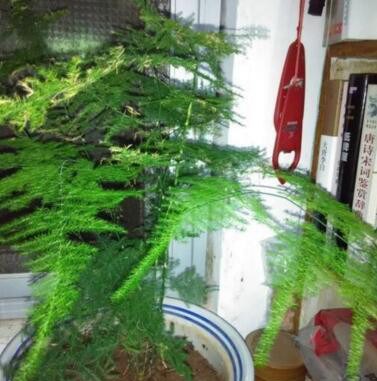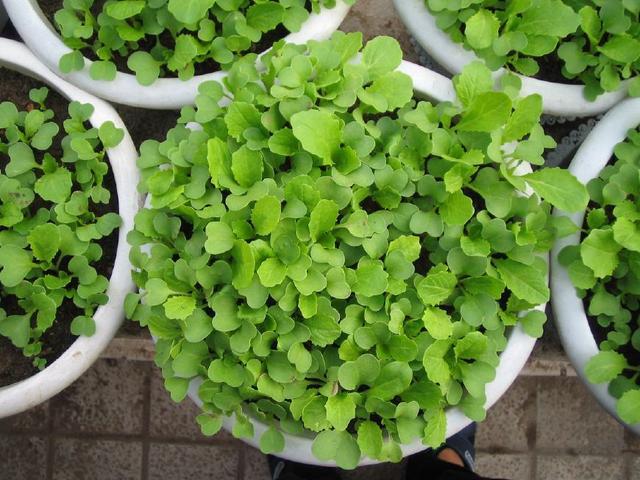These four kinds of materials are not worth 10 cents under the flowerpot, any flower can grow more and more exuberant.

Green pineapple, hanging orchid, rich tree, longevity flower, gentleman orchid. I believe people are raising these flowers more or less, right? With the improvement of living standards, flowers and green plants have entered the life of the public. Although growing flowers is a small thing in life, it has a lot of knowledge. After all, potted flowers are also a discipline. If you want to raise flowers well, you can't raise them well without a few years of experience or some tips. Next, the potted plant stack will share with you some tips for maintaining flowers.
As we all know, flower cultivation includes several details of conservation, such as watering, fertilization, lighting, ventilation, and soil and flowerpots. Among them, the soil and flowerpots are the easiest to ignore. Basically all flowers are suitable for growing in loose and fertile soil, but sometimes improper watering or fertilization makes the basin soil hard and hardened. As a result, the root growth of flowers is blocked, and if serious, it will lead to rotting roots. Some flower friends may say, how can improper fertilization lead to basin soil consolidation? Because fertilizing too much, too often, especially chemical fertilizer, it is easy to cause basin soil to stick together. And put the following four kinds of "materials" in the flowerpot, you can easily rule out the problem of soil consolidation, and the flowers grow more and more exuberant.
The first kind of material: "briquette" on the bottom of the basin.
This kind of thing is really worthless, not to mention 10 cents, not even for nothing. Coal cinder used to be very common in rural areas. I don't know how many coal balls are dumped into garbage pits every year after burning coal balls. And for people who like to grow flowers, it is a good thing. The texture is loose, not only breathable but also permeable. After smashing one or two briquettes and padding them under the flowerpot, the effect can be said to be very good. In this way, the root system of the plant will breathe smoothly and grow faster, so that there will be no rotting roots.
The second kind of material: "pebbles" on the bottom of the basin.
The function of pebbles is to drain water, and it can also have the effect of breathable soil. In addition, there is another point, that is, there are small holes in the bottom of flowerpots to facilitate drainage. If the flowerpot is full of soil from top to bottom, it is easy to block the hole at the bottom of the pot. when watering, water will accumulate in the pot, and when the water in the flowerpot cannot be discharged in time, the roots of flowers will rot due to lack of oxygen. Therefore, pebbles are also a useful part of the process of growing flowers.
The third kind of material: "loofah pulp" on the bottom of the basin.
Towel gourd pulp is also quite common. Especially flower friends living in rural areas, often use it to wash dishes and wash pots and pans, which is very easy to use. Because the loofah pulp is a fiber structure, so its air permeability and water permeability is the best, with a simple loofah pulp cut into small pieces, and then directly on the bottom of the flowerpot can. For a long time, if the towel gourd flesh rotted away, not only does not matter, but will increase the nutrients of the basin soil, after all, it is fibrous, will make the basin soil more loose. If flower friends see loofah pulp in the future, don't lose it again!
The fourth kind of material: pine needle
In the knowledge of growing flowers shared with you before, I once talked about the production of nutritious soil for flowers and used pine needles. Mixing pine needles into the soil can make the basin soil loose and breathable, and its thermal insulation performance is also good. Especially for winter flowers, adding some pine needles to the bottom of the basin, or directly mixed in the nutritious soil, can play a role in protecting the roots of flowers. Pine needles had better choose those that have fallen to the ground that have dried up, do not use fresh ones, or the effect will be greatly reduced. If you can't find a pine needle, you can also use some rotten leaves or sawdust instead.
This is the end of the knowledge about growing flowers. Thank you for reading!
Remember to like and share.
- Prev

Uncle Li only uses its water buds to drill pots full of small white flowers.
When raising asparagus, Uncle Li only uses "its water". Small buds are drilled full of pots and full of "small white flowers." with the improvement of people's living standards, more and more people like to raise a pot of flowers at home, and as people grow longer.
- Next

Three kinds of rapeseed can't hold a stubble in a balcony flowerpot. I don't worry about eating all winter.
Now everyone's standard of living is high, and growing flowers and vegetables has also become a part of life. When it comes to growing flowers and growing vegetables, in fact, there is not much difference between the two. In the process of conservation, there are several elements such as watering, fertilization, light and soil. Now.
Related
- Wuhan Hospital Iron Tree Blooming Result Was Instantly Frightened by the Gardener Master
- Which variety of camellia is the most fragrant and best? Which one do you like best?
- What is the small blue coat, the breeding methods and matters needing attention of the succulent plant
- Dormancy time and maintenance management of succulent plants during dormancy
- Minas succulent how to raise, Minas succulent plant pictures
- What are the varieties of winter succulent plants
- How to raise succulent plants in twelve rolls? let's take a look at some experience of breeding twelve rolls.
- Attention should be paid to water control for succulent plants during dormant period (winter and summer)
- Watering experience of twelve rolls of succulent plants
- Techniques for fertilizing succulent plants. An article will let you know how to fertilize succulent plants.

